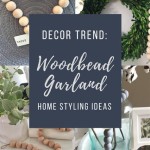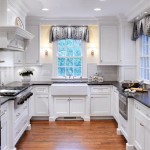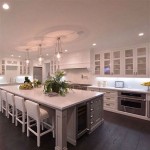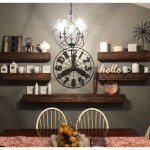1940s Home Decorating Ideas: Finding Comfort and Resilience in Wartime Style
The 1940s were a transformative decade, profoundly shaped by World War II and its aftermath. This era’s impact extended far beyond the battlefield, influencing every facet of daily life, including home decor. Decorating during this period reflected a desire for comfort, practicality, and a sense of normalcy amidst uncertainty. Scarce resources and rationing dictated many materials and design choices, leading to resourceful and innovative solutions. While the war years emphasized functionality and austerity, the latter half of the decade saw a gradual return to more decorative and optimistic styles. Examining the key elements of 1940s home decor provides valuable insights into the period's values and aesthetics.
The overarching themes of 1940s interior design revolved around resourcefulness, practicality, and a desire for a cozy and inviting atmosphere. The wartime restrictions meant that new furniture and materials were often difficult to acquire. Therefore, homeowners embraced repurposing, repairing, and creatively using existing items. This necessity fostered a spirit of ingenuity and a focus on long-lasting quality. Post-war, as materials became more available, there was a yearning for more vibrant colors and decorative elements, reflecting a renewed sense of hope and optimism.
The Importance of Functionality and Resourcefulness
The scarcity of materials during World War II significantly impacted furniture choices and design philosophies. Functional items that served multiple purposes were highly valued. For example, a daybed could serve as a sofa during the day and a bed at night, maximizing space and utility. Furniture was often smaller in scale to suit smaller homes or apartments, reflecting the increasing urbanization of the population. The emphasis was on practicality; every item had to earn its place in the home. This also led to a preference for durable materials that could withstand heavy use and last for many years.
Repurposing and repairing were common practices. Old furniture was reupholstered with available fabrics, often using floral or geometric patterns to add a touch of color and personality to a room. Wood was a precious commodity, so existing wooden pieces were carefully maintained and refinished. Metal was largely reserved for the war effort, leading to a decrease in metal accents in furniture and an increase in the use of wood and other readily available materials. DIY projects were popular, with homeowners crafting their own accessories and decorations to personalize their living spaces without exceeding their budgets or using scarce resources.
The concept of built-in storage became increasingly popular. Built-in cabinets, shelves, and drawers provided efficient storage solutions in smaller homes and apartments, maximizing space and minimizing clutter. These built-ins were often designed to blend seamlessly with the architecture of the home, creating a cohesive and streamlined look. They were particularly useful in kitchens and bathrooms, where efficient storage was essential. Many homeowners also repurposed existing nooks and alcoves into storage areas, further demonstrating their resourcefulness and ingenuity.
Colors, Patterns, and Textiles: Adding Warmth and Personality
Despite the austerity of the era, colors and patterns played a significant role in creating a sense of warmth and personality in 1940s homes. During the war years, muted and earthy tones were prevalent, reflecting the somber mood of the period. However, pops of bright color were often incorporated through accessories and textiles to add a touch of cheerfulness. Post-war, brighter and bolder colors became more fashionable, reflecting a renewed sense of optimism and hope. Popular colors included pastel shades of pink, blue, green, and yellow, as well as bolder hues of red, navy blue, and forest green.
Floral patterns were ubiquitous in 1940s decor. Floral wallpapers, fabrics, and accessories were used extensively to add a touch of femininity and warmth to interiors. Large-scale floral prints were particularly popular, often featuring roses, tulips, and other classic floral motifs. Geometric patterns were also common, adding a touch of modernity and sophistication to rooms. These patterns were often incorporated into rugs, curtains, and upholstery, creating visual interest and texture.
Textiles played a crucial role in adding comfort and style to 1940s homes. Cotton was a popular choice for upholstery and curtains due to its affordability and durability. Linen was also used, particularly in warmer climates. Wool was often used for rugs and blankets, providing warmth and comfort during the colder months. Homeowners often used slipcovers to protect their furniture and update their decor. These slipcovers could be easily removed and washed, making them a practical and stylish choice. They also allowed homeowners to change the look of their furniture without having to purchase new pieces.
Key Furniture Styles and Arrangements
Furniture in the 1940s prioritized comfort and functionality, often featuring rounded edges and soft upholstery. Streamlined, modern designs were popular, reflecting the influence of the Art Deco and early Mid-Century Modern movements. Furniture was often smaller in scale compared to earlier decades, reflecting the trend towards smaller homes and apartments. The arrangement of furniture was typically centered around the fireplace or the radio, which served as the primary source of entertainment and information. Creating a comfortable and inviting seating area was a key priority.
The use of wingback chairs and overstuffed sofas provided comfortable seating options. These pieces were often upholstered in floral or geometric patterns, adding a touch of color and personality to the room. Coffee tables were typically small and simple, often made of wood or glass. Side tables were strategically placed throughout the room to provide convenient surfaces for lamps, books, and other accessories. The arrangement of furniture was designed to encourage conversation and create a sense of intimacy.
Bedroom furniture typically included a bed, a dresser, and a nightstand. Beds were often made of wood or metal, with simple and elegant designs. Dressers provided ample storage for clothing and personal items. Nightstands were typically small and functional, providing a surface for a lamp and a bedside book. The overall look of the bedroom was clean and uncluttered, emphasizing comfort and relaxation. Mirrors were often used to create the illusion of more space and light, particularly in smaller bedrooms.
The dining room typically featured a dining table and chairs. Dining tables were often made of wood, with simple and functional designs. The chairs were typically upholstered in fabric or leather, providing comfortable seating for family meals and gatherings. Sideboards or buffets were often used to store dishes and serving utensils. The overall look of the dining room was formal and elegant, reflecting the importance of family meals and social gatherings. Table linens and china were often carefully selected to create a beautiful and inviting dining experience.

1940s Decor 32 Pages Of Designs And Ideas From 1944 Retro Renovation Home Interior

1940s Decor 32 Pages Of Designs And Ideas From 1944 Retro Renovation

1940s Decor 32 Pages Of Designs And Ideas From 1944 Retro Renovation

1940s Interior Design The 8 Most Popular Looks Retro Renovation

1940s Decorating Style 40s Interior Design Ideas Fresh Blog

Glam 1940s Interior Design 5 Before After Bedroom Makeovers Plus More Retro Room Renovations Americana Vintage

Vintage From The 1940s And 1950s In Contemporary Interior Design Florim S P A Sb

1940s Decor 32 Pages Of Designs And Ideas From 1944 Retro Renovation

Decor Through The Decades 1940 S House Blog

1940s Interior Design The 8 Most Popular Looks Retro Renovation







